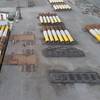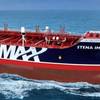Since last nationwide analysis in 2007, U.S. seaport contributions to economy up dramatically
Lancaster, Pa.-based Martin Associates, a provider of economic and strategic assessments of the world’s transportation systems, released the results of its latest economic impact study of United States seaports. Dr. John Martin, Martin Associates’ president, debuted his firm’s 2014 National Economic Impact of the U.S. Coastal Port System report during the second day of the American Association of Port Authorities’ (AAPA) 2015 Spring Conference in Washington, D.C.
In the seven years since Martin Associates’ last nationwide ports economic impact study, the contributions of America’s seaports to the nation’s economy have risen dramatically. From 2007 to 2014, the total economic value that U.S. coastal ports provide in terms of revenue to businesses, personal income and economic output by exporters and importers rose 43 percent to $4.6 trillion. This accounted for 26 percent of the nation’s $17.4 trillion economy in 2014, up from 20 percent of its $16.1 trillion economy in 2007.
Other notable gains since 2007 in Martin Associates’ new report include:
- Federal, state and local tax revenues generated by port-sector and importer/exporter revenues rose 51 percent to $321.1 billion;
- Jobs generated by port-related activity jumped 74 percent to 23.1 million; and,
- Personal wages and local consumption related to the port-sector doubled to $1.5 billion, with the average annual salary of those directly employed by port-related businesses equating to $53,723.
“The growth in jobs and economic importance of America’s seaports reflects the fact that the value of international cargo handled at these ports increased by $400 billion since 2007, reaching about $1.8 trillion in 2014,” said Dr. Martin. “It’s important to emphasize that the key growth in our international trade was in U.S. exports, which saw a 60 percent increase in value over the past seven years.”
Dr. Martin noted that each dollar increase in the value of export cargo supports significantly more jobs in the U.S. than does a dollar value of growth in imports. He also emphasized that the robust growth in the economic impact value from U.S. ports occurred despite the economic recession that severely hampered marine cargo activity between 2008 and 2012.
“The growth in the contributions of our ports to the nation’s economy underscores the need to invest in infrastructure and technology to support and foster good jobs, national security, inter¬national trade and our standard of living,” said Dr. Martin.
In agreement with Dr. Martin’s assessment is AAPA President and CEO Kurt Nagle, who said that particularly with the economic contributions of America’s seaports growing rapidly, there’s a significant and urgent need for more federal investment in enhancing the connections with those ports. He added, “On the land-side alone, AAPA’s U.S. member ports have identified at least $28.9 billion in needed investments by 2025. These necessary road, rail, bridge and tunnel improvements are crucial to enable our seaports to efficiently handle their expected cargo volumes, continue providing dramatic economic and jobs impacts, and enhance America’s international competitiveness.”

















